Are these end times for binge culture?
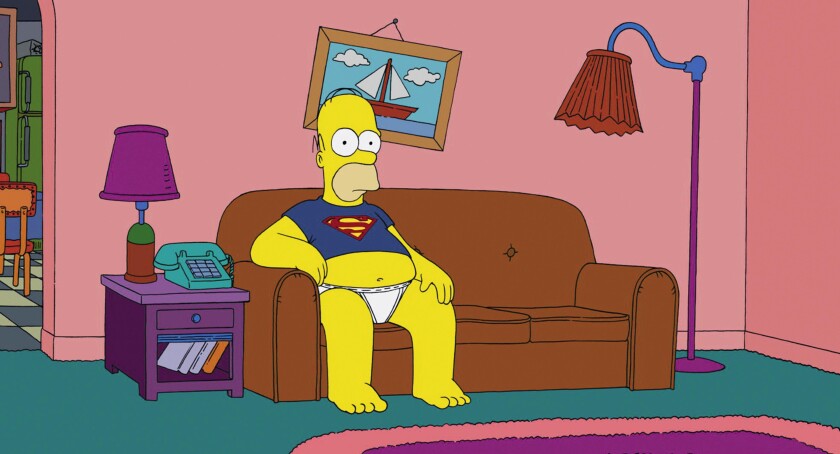
After years in ascendance, streaming services are leaning away from, if not wholly abandoning, the binge.
(Matt Groening/20th Century Fox/Kobal/Shutterstock)
OCT. 10, 2019
6 AM
This story is part of a Times series on the great streaming wars of 2019. Click here to read the rest of our coverage of Disney +, Apple TV +, HBOMax and more.
After years of buildup, feverish media speculation and a steady drip, drip of promotion, Apple will finally make its long-awaited push into original programming with the Nov. 1 launch of its streaming service, Apple TV+.
Easily its most anticipated series is “The Morning Show,” a much-hyped drama starring Jennifer Aniston and Reese Witherspoon as journalists caught in the maelstrom when the popular anchor of a morning news program, played by Steve Carrell, is fired for sexual misconduct.
With its A-list cast, lavish production values, acclaimed creative team and timely, provocative subject matter, “The Morning Show” might have been created in a streaming TV lab — with one exception.
Viewers eager to consume the show in a sitting or two will have to pace themselves: Apple TV+ will make three episodes of the series available immediately, but the remaining seven episodes will be released weekly.
As the number of original scripted programs closes in on 500, and four new streaming platforms prepare to enter the market in the next six months, the scramble to stand out has led key players to lean away from releasing full seasons at once — a model introduced by Netflix — if not wholly abandon it.
Having had roughly six years to figure out how to best attract TV viewers trained to feast on content, none of the streaming services set to debut between now and next spring will be exclusively adopting the binge model, and veterans like Netflix, Amazon and Hulu have tried different release strategies themselves.
In contrast with the shorter cultural shelf lives of many streaming titles, which burn bright for a spell before fading, the success of shows like “Succession,” “Killing Eve” and “The Good Place” has illustrated the buzz-generating power that weekly TV still holds and the downside of offering viewers instant gratification.
Which raises the question: Is this the end of the binge?
Hardly. But while these new platforms have changed the face of television, they’re not ditching the traditional rule book entirely.
Disney +, launching Nov. 12, will release episodes weekly. Apple TV + will take the same hybrid approach with “See” and “For All Mankind” as it will with “The Morning Show,” while “Dickinson” — with half-hour episodes and a distinctly youthful air — will be dropped en masse. HBO Max, expected in spring 2020, is also unlikely to adopt the “binge and burn” approach, according to a source with knowledge of the situation. Even Netflix is experimenting with releasing select reality titles and talk shows on a different schedule.
Appointment viewing might seem old-fashioned, a vestige of the dark days before DVRs and video on demand, but week-to-week anticipation and strong word of mouth helped propel the growth of recent shows like HBO’s “Succession” and “Chernobyl.” It turns out if you want a “watercooler” show, it helps to be in the room at the same time.
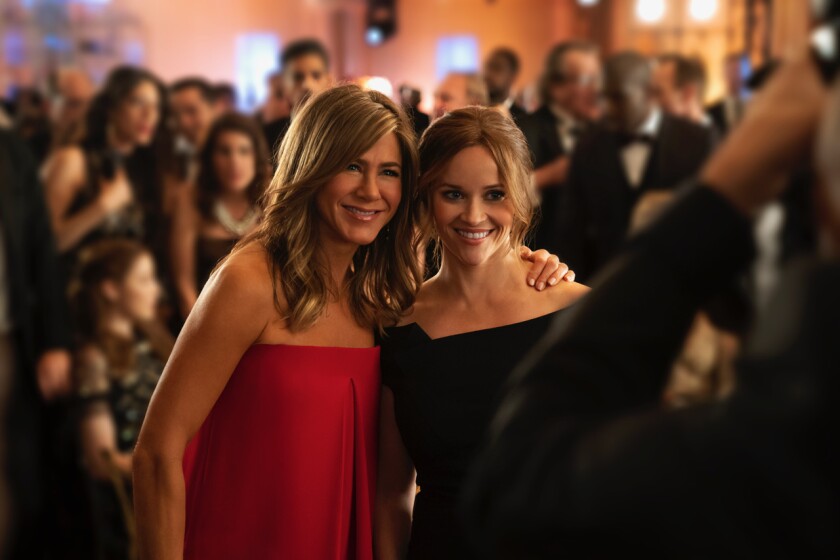
Jennifer Aniston and Reese Witherspoon in “The Morning Show” on Apple TV.
(Hilary B Gayle/Apple)
When Netflix made its first real push into original programming in 2013 with “House of Cards,” the company embraced the binge model — if not the term (it reportedly preferred “marathon” viewing) — as part of its brand identity. In what was a radical departure at the time, all 13 episodes of the political drama were available to watch, any time, making it “the first show for the on-demand generation,” Chief Content Officer Ted Sarandos said at the time.
Of course, “House of Cards” is hardly the first show viewers consumed in long, uninterrupted stretches. Anyone over the age of 35 will fondly remember parking on the couch for weekend marathons of “The Real World” on MTV in the ’90s, or overdosing on boxed sets of “The Sopranos” and “24” in the early aughts.
But once Hulu and Netflix made streaming technology available to the masses more than a decade ago (Netflix introduced streaming in 2007; Hulu launched the following year), it was suddenly possible to gobble up back-to-back episodes of “The Office” at the click of a button. Before it was known for original programming, Netflix was the place to catch up on addictive, often heavily serialized shows that originally aired elsewhere, a trend that exploded with its acquisition of the AMC series “Breaking Bad.”
Amazon entered the original programming game in late 2013 and initially tried a more measured approach, releasing three episodes of early shows like “Alpha House” at once, followed by new installments weekly. But by the time the breakthrough comedy “Transparent” came out in 2015, Amazon had switched to an all-at-once strategy.
Hulu, meanwhile, has largely used the pace-yourselves approach — often releasing two or three episodes at launch, then one episode each subsequent week. But it has made binge-release exceptions for certain shows, such as its recent “Veronica Mars” reboot.
“We went from a world where consumers didn’t know anything but weekly to this new model where they could binge it all, and now we’re seeing this sort of hybrid model,” said Ryan Crosby, Hulu’s vice president of content and brand marketing. “From our perspective, we’re going to go where the audiences go. I think we’re in a world where now consumers are leading the way, not us. We’re not in a spot where we can force them to engage in a certain way.”
While new seasons of some streaming series — Netflix’s “Stranger Things” and “The Crown,” Amazon Prime’s “Fleabag” — feel like events that command the cultural conversation, necessitating quick viewing to avoid spoilers, the binge model means that even the buzz around breakout shows drops off quickly. The most recent season of “Stranger Things,” for example, netted 8.2 million Twitter mentions its first week of release in July; by its fifth week, there was a dramatic drop in mentions of more than 90%. (The major streaming services release viewership numbers selectively, if at all.)
It’s also become harder to break through the noise in the first place: TV is booming, with streaming networks accounting for roughly a third of the nearly 500 original series in 2018, according to research by FX. This may be especially true of quirkier, under-the-radar shows dependent on word of mouth, such as the animated comedy “Tuca & Bertie” which was abruptly canceled by Netflix in July — less than three months after its debut. It was one of the best reviewed shows of the year, but by the time many viewers were inspired to sample it, its fate had already been sealed.
I’m not into binge-viewing. I think the reason people are so in love with ‘Game of Thrones’ and shows like that is you are building a relationship with those shows. It’s like, ‘Don’t call me, don’t want to know you during this hour or whatever that I’m watching my show.’
AMY SHERMAN-PALLADINO, “THE MARVELOUS MRS. MAISEL”
And evidence suggests that binged shows don’t linger as long in viewers’ minds. In a 2017 study about the effects of binge-watching on comprehension, researchers at the University of Melbourne found that people who watched all six hour-long episodes of the Cold War drama “The Game” in a single sitting retained less information in the long run — and may have enjoyed the show less — than viewers who paced their consumption over weeks or days.
Shows that follow a more traditional week-to-week release can often benefit from the measured build of a season spanning months. The HBO limited series “Chernobyl” became an unlikely hit this spring, thanks largely to positive buzz that reached deafening levels over the course of its five-week run.
According to Twitter, mentions of the series grew tenfold between its May debut and June finale. The show’s same-day ratings also grew by more than 50%, from 1.2 million to 1.9 million viewers on Monday nights. “Succession,” which winds down its second season on Sunday, has also benefited from a more traditional release pattern (not to mention its outsize popularity with media professionals).
Even as it moves on from “Game of Thrones,” mourned by many as “the last show everyone watched together,” HBO plans to stick with the weekly rollout.
“Why would you give up the weekly episode release?” programming president Casey Bloys told The Times in August. “To have people united watching and talking about these shows. To give the audience numerous chances to connect.”
The premium network also recently launched a marketing site, “Recommended by Humans,” where users can hear testimonials about HBO shows and sample them for free. An obvious dig at the Netflix algorithm, the site also highlights the network’s commitment to a more organic, word-of-mouth strategy.
But shows released on a more traditional timeline also benefit from being available on demand and in bulk, so that when a friend — or TV critic — recommends a show, viewers can catch up easily. According to HBO, once delayed viewing was factored in, the average audience for each episode of “Chernobyl” rose to 12.9 million viewers, meaning the overwhelming majority of the show’s audience was watching on demand or through one of HBO’s streaming platforms.
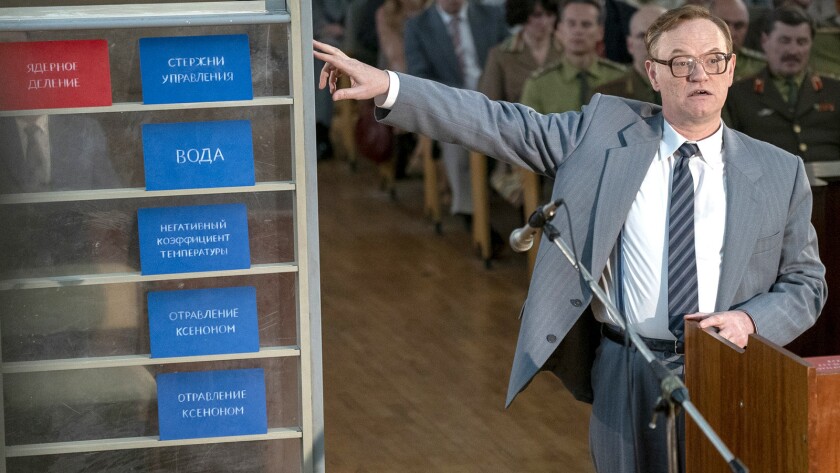
Jared Harris in “Chernobyl” on HBO.
(HBO)
These and other lessons learned from viewership patterns in the streaming era have led a number of players in the streaming arena to experiment with multiple release strategies. CBS All Access, which programs series such as “The Good Wife” spinoff “The Good Fight,” “Star Trek: Discovery” and “Why Women Kill,” mostly uses a weekly strategy, but it has applied the binge format selectively, dropping all episodes of the cop comedy “No Activity” and the upcoming true crime series “Interrogation” at once.)
“It fits the nature of our consumer base and our history,” said Marc DeBevoise, president and COO of CBS Interactive. “It allows us to show our creators that we are extending our marketing plan, that we are supporting the shows past a few episodes. The binge is always there if the viewer wants to wait until the end.”
Netflix itself has deviated from the binge model with certain genres, beginning with talk shows like “Patriot Act With Hasan Minhaj” and David Letterman’s “My Next Guest Needs No Introduction.”
Now, as part of a licensing agreement, new episodes of the popular reality series “The Great British Baking Show” stream weekly on Netflix a few days after airing in the U.K., a boon to spoiler-phobic American fans. “Rhythm + Flow,” in which judges Cardi B, T.I. and Chance the Rapper will search for the next great hip-hop star, will be released in multi-episode batches over the course of three weeks. It’s Netflix’s first attempt at a music competition show in the vein of “American Idol” or “The Voice” — a format that relies on building the anticipation for the big moment when the confetti rains down from the ceiling and the winner is finally revealed.
Three or four episodes a week “will be enough to satisfy the binge-watcher while still protecting the identity of the winner,” and build word of mouth, predicts executive producer Jeff Gaspin, who helped develop unscripted hits like “The Biggest Loser,” reruns of which often aired in cable-TV marathons, and the once-ubiquitous “Behind the Music.” “We built a big fan base because that show was so readily available,” he said of the VH1 documentary series.
But dropping entire seasons at once also has potential drawbacks, Gaspin said. “If people don’t discover a show quickly, it could also go away rather quickly. If the algorithm doesn’t keep recycling it and it’s no longer one of the first shows you see when you turn on your service, it’s out of sight, out of mind.”
Of course, there’s no putting the genie — or, in this case, binge-trained viewers — back in the bottle. Viewers still retain control of when and how they watch TV. And for storytellers, knowing that many viewers will likely sit through more than one episode at a time has narrative benefits. Episodes can avoid clunky references to past plot points and needless character introductions, creating stories that unfold more seamlessly.
“There’s less time reminding people about what happened in the previous episode,” said Bruce Miller, showrunner of Hulu’s feminist dystopian drama “The Handmaid’s Tale.” “We’re more committed to giving people their hour’s worth. We try to make episodes fully packed.”

Rachel Brosnahan in the Amazon Prime Video series “The Marvelous Mrs. Maisel.”
(Amazon Studios)
Still, many showrunners, including Miller, have deep reverence for the slower, traditional week-to-week release. It puts less pressure on the viewer who has been conditioned to watch things immediately or risk coming across spoilers or failing to catch a bandwagon in time. It also stretches the conversation around a show beyond one week and is a less isolating experience.
“I much prefer week-to-week,” Miller said. “And as soon as you’re done rolling out episodes that way, viewers who’d rather binge it have the option. Our show, especially, is easier to digest week-to-week. Or at least that’s my feeling. I wouldn’t be able to binge it.”
Amy Sherman-Palladino and Dan Palladino, the showrunners of Amazon’s “The Marvelous Mrs. Maisel,” are also proponents of viewers building a relationship with a show rather than having a short fling. But, they acknowledge, it’s ultimately now up to the viewer.
“I’m not into binge-viewing. I think the reason people are so in love with ‘Game of Thrones’ and shows like that is you are building a relationship with those shows.” Sherman-Palladino said. “It’s like, ‘Don’t call me, don’t want to know you during this hour or whatever that I’m watching my show.’”
Added Palladino: “I know there are people who watch shows like ours in one or two viewings. But there are way more that try to stretch it out. People have lives. They have kids, they have work, they have to go to bed. But, whatever the case, people now consume it the way they want. That’s here to stay.”
“The Morning Show” boss Kerry Ehrin, who found comfort in gorging on six seasons of “Game of Thrones” as a distraction when her daughter moved out, sees the value of the binge and the non-binge. She says the first three episodes of the Apple drama were designed as a movie, knowing viewers would have access to them in one sitting. The subsequent week-to-week roll out, she says, will help the show — and the streaming service — build a relationship with viewers.
“It gets a lot of people into the show quickly and then it keeps the focus on the show and the streaming service longer and pulls more people in,” she said.
Others have tried to combat the b-word in their own way. Michael Schur created NBC’s “The Good Place” in an attempt to challenge the binge era. ABC’s “Lost” and its cliffhanger suspense had served as inspiration.
“What’s funny to me is it accidentally turned it into a perfect binge show,” Schur said of the series’ trademark twists. “Season 3 just dropped on Netflix like a week ago and I’ve met so many people in the last five months who would say to me like, ‘Oh, I can’t wait for Season 3.’ And, like, it aired [on NBC]. The whole thing aired.”
Staff writer Greg Braxton contributed to this report.
NEWSLETTER
Get our daily Entertainment newsletter
Meredith Blake is an entertainment reporter for the Los Angeles Times based out of New York City, where she primarily covers television. A native of Bethlehem, Pa., she graduated from Georgetown University and holds a master’s degree from New York University.
Yvonne Villarreal covers television for the Los Angeles Times.
MORE FROM THE LOS ANGELES TIMES
- 20 minutes ago
- Oct. 31, 2019
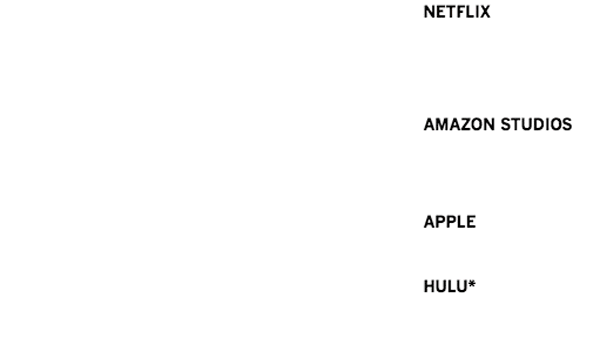

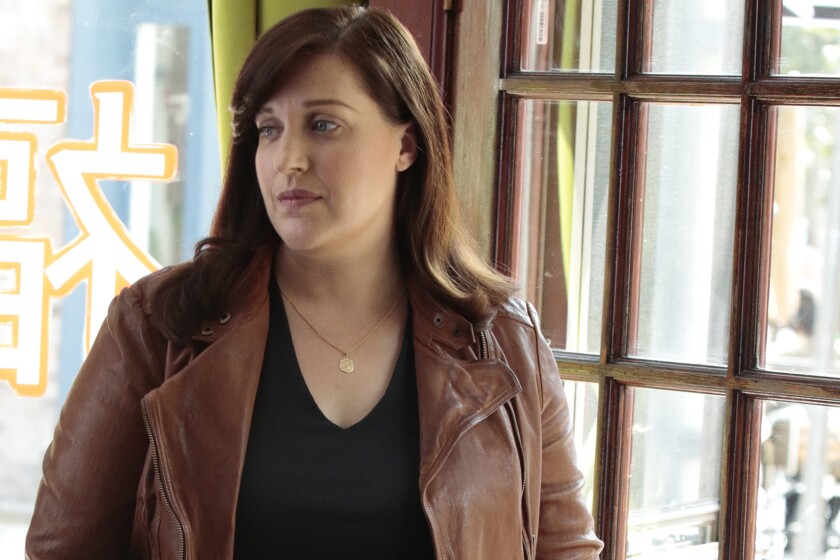
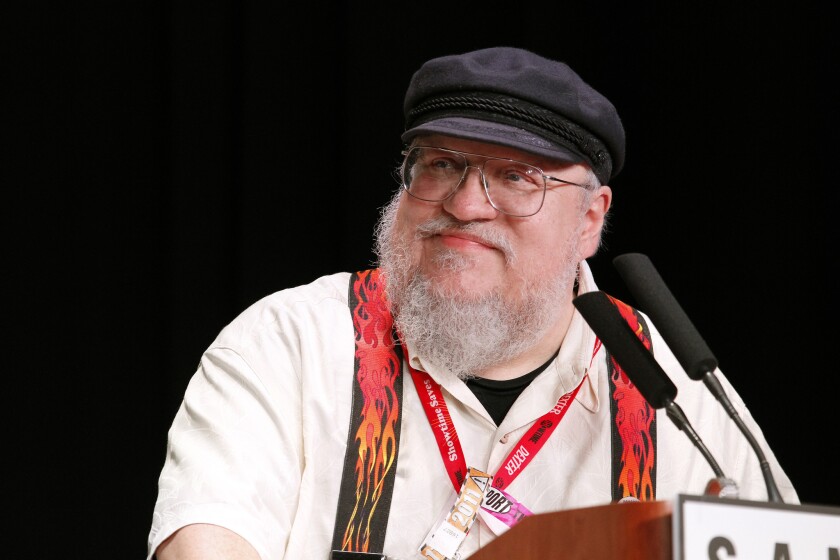
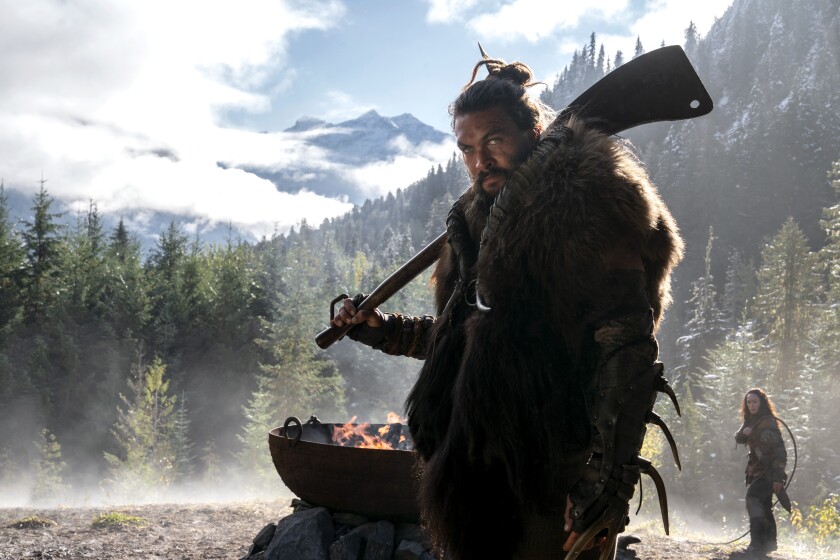
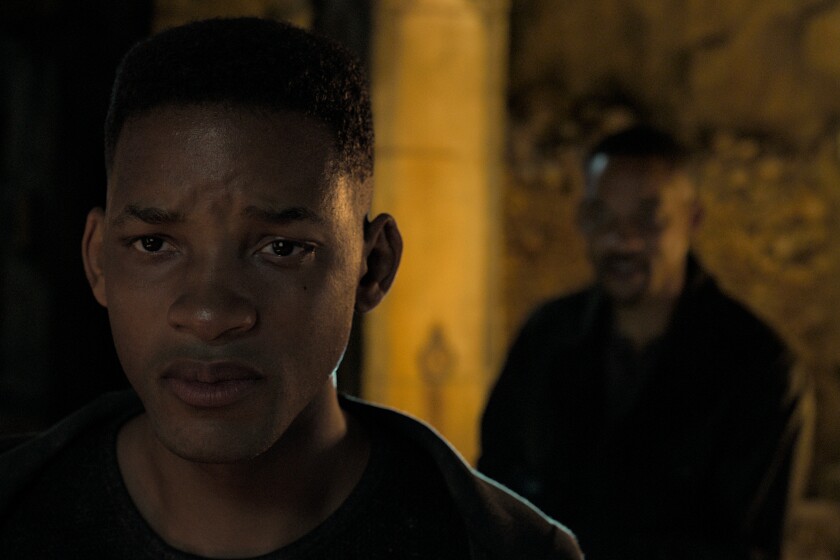



No comments:
Post a Comment